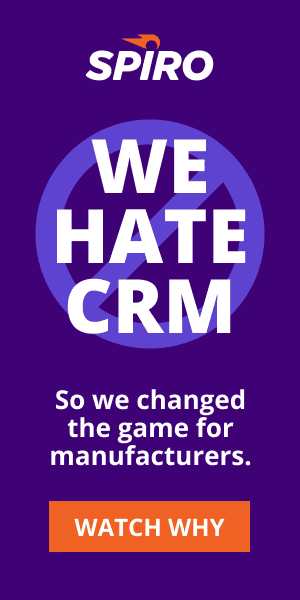Best Practices for Moving from CRM to Spiro

Spiro COO, Justin Kao, has supervised hundreds of companies in their movement from a wide variety of traditional CRM implementations to Spiro. Prior to co-founding Spiro, Justin worked as a consultant in the CRM field for years, making him a true expert in implementing new sales solutions.
So we decided to ask him exactly what companies need to know when moving from CRM to Spiro’s proactive relationship management platform. Here are 5 important tips to know when making the switch:
#1: Take the data you need and leave the rest
When moving away from your old CRM, decide what data you want to keep moving forward. A year’s worth of data likely provides more than enough information on your activities. Typically, anything older than 12-18 months is not going to be valuable. Even if you have a long sales cycle, your communication 18 months ago is less relevant than last month. People change roles and move companies all the time, and your CRM isn’t keeping up with that.
Keep only data that is recent, so that you can be more confident that the information is actually correct. Then, Spiro can layer on new information to supplement and update the information and contacts that you already have. Unlike legacy CRMs, Spiro automatically enhances data insights for your contacts and companies based on your interactions with them. This relieves you from the burden of constantly updating contacts and company records.
#2: Replace extraneous data with actionable insights
A core benefit of migrating to Spiro is that your team will become more effective while streamlining internal processes. That’s why it’s important to do an honest assessment of your data and decide what information you want to collect moving forward.
Rather than simply transferring all the same fields that you had in your old CRM into Spiro, take the time to identify what you want to measure and record, based on what is going to work best for you. Adopting Spiro is the perfect time to dig deep and determine what data is extraneous or duplicated, and what data is best suited for driving actionable insights.
#3: Spend more time on doing the right things
Far too many teams allow their technology to limit their day-to-day lives. Technology should be enhancing your sales process, rather than driving it. Too often, legacy CRM creates additional tasks, rather than eliminating them. Sales teams should spend time meeting with prospects, drafting proposals, and networking. Unfortunately, when you ask a rep what their day looks like they say they’re spending valuable time “Logging into my CRM, entering new customers into my CRM, recording notes from calls, scheduling tasks, etc.”
The goal is to make technology work for you behind the scenes rather than the other way around. Spiro lightens the workload and simplifies your sales process by automating tedious and time-consuming tasks. By enabling Spiro to pull data from other key applications, your sales team will be able to access information that helps them close more opportunities faster.
#4: Circle back on training for better adoption
You can lead a horse to water, but you can’t make it drink. Giving a rep better technology is only going to do so much. You still need to help them adapt to the system and make the necessary behavior changes required by teaching them how this new approach differs from the old. Spiro automates a lot of the sales process, so the key is helping reps unlearn bad habits. It is important that your reps don’t try to use Spiro the same way as their old CRM – Spiro is a completely new approach. There is much more automation and many innovative new features like the email assistant, which can save hours of time if used correctly.
Something that can help quite a bit is hosting a second training 3-6 months after you go live with Spiro. This allows reps to test out and learn the system for a bit of time. Then, you’ll be able to pinpoint any gaps that remain and to address them in the second training. The more times a person is taught something, the more likely they are to actually remember – this second training will solidify what they previously learned.
#5: Demonstrate the power of Spiro
Make sure your sales team knows the “why” behind your Spiro adoption. No matter how great a technology is, if no one is using it, it doesn’t matter. Host team meetings before you go live and let them know exactly why you want to make the switch. We had a new customer so excited about transitioning to Spiro that they created an entire internal website about their Spiro adoption. You may not want to do all of that, but you need to clearly demonstrate the benefits for your reps to be inspired and willing to adopt and use the platform.
A great way to show the value of your new platform is to use Spiro’s analytics to drive your pipeline review meetings. By using real-time data, your team can see exactly how Spiro is making a difference in your bottom line. Results are an extremely powerful motivator, so be sure to share your forecast with everyone.
Don’t just migrate, transform
Ultimately, moving from your old CRM tool to the Spiro platform is an opportunity to significantly enhance your business growth and improve your sales team performance. Simply remember to be selective with your data, adjust your sales process as needed, ensure your tech works for you, teach new habits, and get your team’s buy-in on the “why.”

